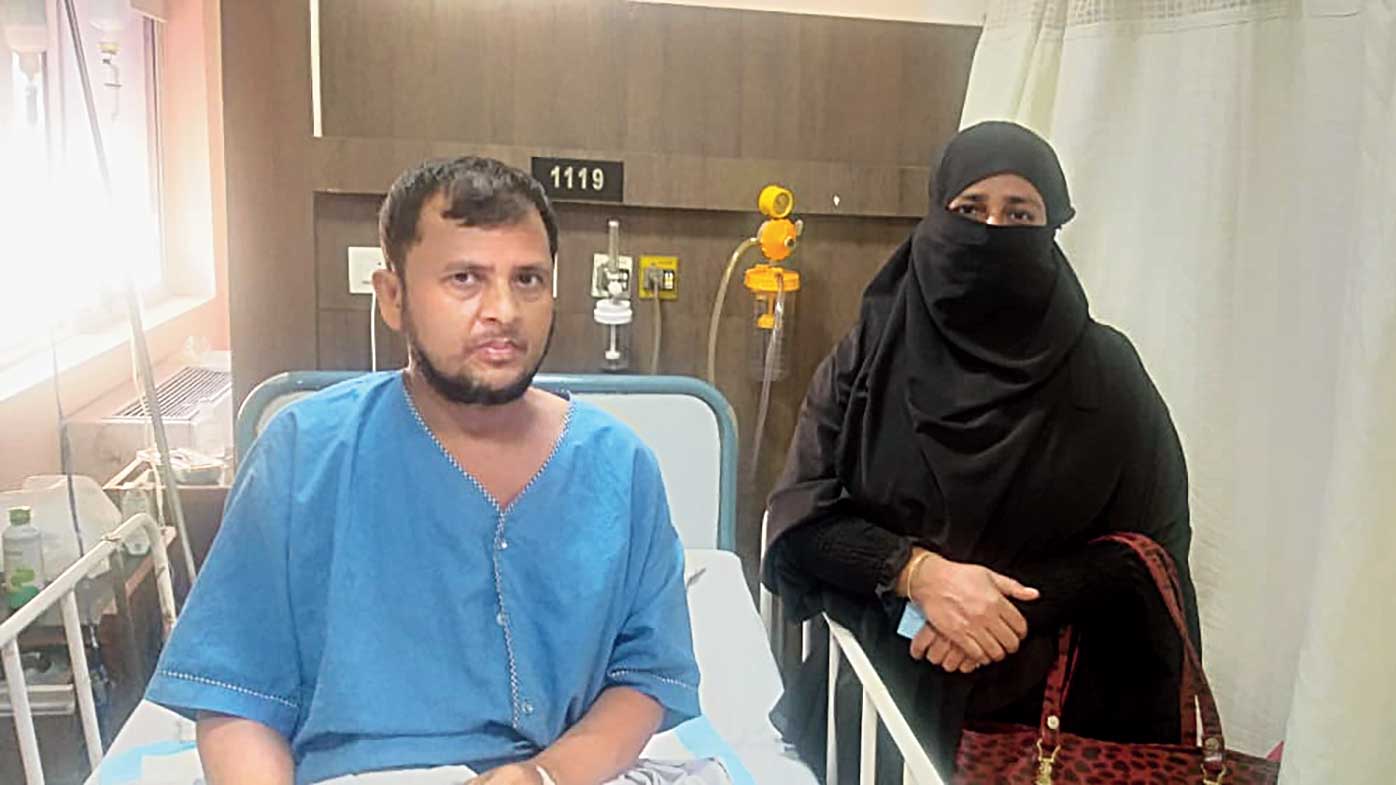A man of limited means from Bangladesh fractured the same knee on which he had undergone a knee replacement weeks before.
The man sold his land and came to Kolkata for a surgery on the same knee almost three months later after a doctor in that country said they could do little there.
Zillur Rahim, 49, from Lakshmipur district in Bangladesh where he used to serve tea at a private company, had his right leg deformed and underwent a major surgery in a private hospital in Kolkata a few days back.
Rahim said the delay in getting treated was due to two reasons: he had to sell off his land to arrange for the treatment and difficulty in getting a medical visa because of the pandemic.
Rahim was suffering from rheumatoid arthritis for many years and finally in May, he got his right knee replaced at Ibn Sina Medical College, Dhaka.
“In August, he tripped and fell. This caused a fracture in the leg where the surgery was done,” said Runu Begam, his wife. Rahim was taken to Dhaka and again got admitted at the same hospital where he stayed for six days.
“The doctor said I needed a complicated surgery which could not be performed there and so referred me to a hospital in Kolkata,” said Rahim.
He was referred to Peerless Hospital in Kolkata.
“We have four daughters and my husband is the only earning member of the family. If he became immobile permanently, then it would be impossible to run the family,” said the wife. So, they sold most of the land the family owned.
“It took a month for us to sell the land and get enough money for the treatment in Kolkata,” said Rahim. It took another month to get the visa for the couple and Rahim’s nephew who accompanied them to Kolkata.
“First we applied to the Indian embassy in Dhaka but the application was rejected,” said Rahim. Finally, they got a visa from the Indian assistant high commission’s office in Chittagong and came here a few days back.
“Because of the delay in intervention, there was a malunion, which means the bone healed in an abnormal position. The malunion caused wrong alignment of the leg thereby preventing movement. The main artery behind the artificial joint was getting pressed; leading to obstruction of blood flow to the lower portion,” said Sudipto Mukherjee, orthopaedic surgeon at the Peerless Hospital. “This could have been avoided if the surgery was done within a week of the fracture,” he said.
Mukherjee and Nikhilesh Das, another orthopaedic surgeon jointly conducted a fresh surgery where the limb was put in normal alignment. “The patient would be unable to walk on his own for at least four months,” said Mukherjee.
